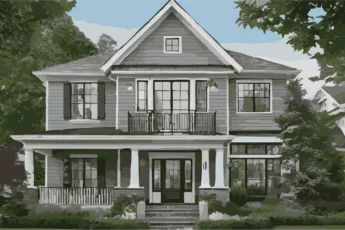Building a laneway house in Toronto is not for the faint of heart, nor is it an inexpensive endeavor. The status quo in neighbourhoods across the city is protected by an unsettling amount of zeal, by city officials and local residents alike. This often results in desperately-needed new housing proposals being subjected to the city’s myriad of oppressive reviews, delays, restrictions, fees, and inspections, even when those proposals appear to be straight forward. It has been nearly impossible for homeowners to build a small secondary unit at the rear of their property for a family member in need, even if they have a favourable lot size and laneway access.
Do you want to build a laneway house and need guidance? Schedule a call today!
Toronto’s new policy for these so-called ‘laneway houses’ is referred to as Changing Lanes, and it has eased the restrictions imposed in the past. The new laneway housing policy was driven by a need for more housing options other than the monolithic high-rise towers few residents ever welcome in their neighbourhoods. An example of what city planners consider ‘gentle density’, laneway houses are built on under-utilized spaces in locations that can fit them, in many cases replacing an existing garage.
In particular, property investor landlords will find laneway housing to be an attractive alternative. Such dwellings provide a strong business case in a city where a new-build one-bedroom downtown apartment, 500 square feet in size, rents for no less than $24,000 annually. Assuming a comparable laneway house project costs $300,000 cash to build, the starting rate of return is an attractive 8.0%. That’s already a better than most other investments before accounting for the increase in value added to the property once the laneway house is built. Going the financing route for such a project will further improve your rate of return.
We wanted to see if we could find a property in our portfolio that was a good candidate for this program, and settled on a multiplex near Bathurst & St Clair (I happened to represent the clients in its purchase in 2014). At first glance, the property seemed suitable and did our homework to determine the following:
- Lot Width: 5.4m (minimum requires is 3.5m) at the rear;
- Lot Depth: 32.7m (minimum is 5m between rear of existing house and start of laneway house);
- Zoning: R 0.6 (zoning density waived for 250km of laneways, avoids minor variance hearing);
- Parking: One spot in existing garage (requirement for parking waived, avoids minor variance hearing);
- Access: 1.2m wide side alley (minimum 1m width required);
- Timeline: To begin within two months (6+ month wait for minor variances hearing avoided);
- Costs: Pay in cash for construction & design ($50,000+ city fees waived for all laneway houses);
- Height: Two storeys proposed (maximum height is 6 meters);
- Units: Adding one more unit to an existing three-unit house (limitations on additional units waived, avoids minor variance hearing);
- Trees: No obstructions (removal of trees typically prohibited).
While determining the potential for a laneway house permit, a routine disclosure request was submitted to the City. This inquiry produced a trove of documents related to the 2012 renovation of the property. Among them, drawings which identified the architect, who turned out to be someone we frequently used when converting single-family houses into multi-family ones. It took the architect no time to confirm that a laneway house was almost certainly possible. And although it appeared as though we were in great shape to proceed with this project, it was not to be.
The decision to apply for a laneway house permit was set aside and instead I was asked to list the property for sale. To ensure our efforts were not in vain, and in an attempt to improve the value future investors may see in the property, I highlighted the potential for a laneway house in the listing. I also made sure to educate potential buyers and their agents about it. While I regret a laneway house project never came to fruition, it was enlightening to gauge market interest in such potential. About one-third of those interested in the sale of the property expressed an interest in the laneway house potential. It was clear buyers are taking note and I believe this will happen more.
In a city like Toronto where new housing units are in constant demand, especially those in residential areas, laneway houses are likely the trend of the future. They may also be a ‘saving grace’ among many needed in this high-priced housing market.
If you are the owner of a property you believe may accommodate building a laneway house in Toronto, or are interested in acquiring one, please do not hesitate to reach out.



